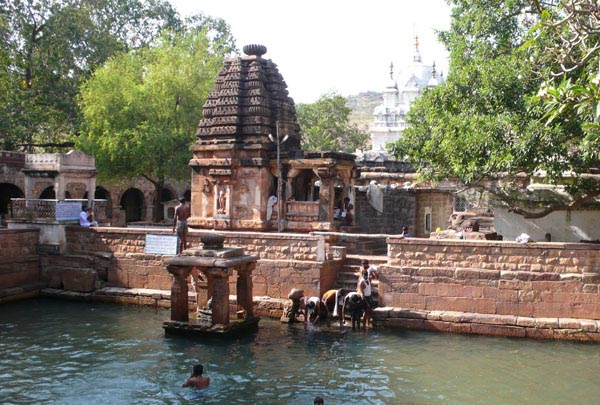Mahakuta Group of Temples

Information of Mahakuta Group of Temples, Bagalkot, Karnataka
Mahakuta group of Temples is a famous ancient Hindu shrine located in the Mahakuta Village, Bagalkot District of Karnataka State in India. These are stone temples built by the Badami Kings in-between the 6th and 7th century AD. These temples are one of this finest works of Chalukeyan Architecture ever built in their period. This group of temples is the largest temple in Bagalkot with a common presiding deity of Lord Shiva in these temples. It is a core worship place for the Shivik sect of Hinduism. This is a divine place surrounded with huge trees and these stone temples are amidst the shadow of these trees and look very marvelous in this silent village. This is a great worship place and also a perfect site for historian and architects.
Mahakuta Group of Temples Religious Significance
The word Maha literally means to Lord Shiva and kuta means group. Hence, this place is called as the group of Shiva temples or the Mahakuta. Here lord Shiva is worshiped in the form of Linga and his actual manifest in sculptors. This group of temples is also known as the Dakshina Kashi. Many pilgrims come to this temple once in a year as must and it is practiced by the Shiviks as a customs. The other Hindu sects also visit here for special poojas and rituals. Since, it is always believed that ancient temples have some special powers. There are two ponds in the temple complex, one is believed to be an ablution pond and the other is a natural spring pond. Both are the ponds are considered to be a holy and sacred pond and all devotees take a dip or bath here before entering this temple.
Mahakuta Group of Temples Mythology & History
These temples were built by the Pulakesi I, who was a great devotee of lord Shiva. This place was once the ancient capital of Chalukya Dynasty.
Festival at Mahakuta Group of Temples
The Shivarathri is the important festival celebrated here. Many pilgrims come here on this special day.
Mahakuta Group of Temples Architectural Significance
Mahakuta group of Temples are popularly known as the symbol of Chalukyan architecture. But these temples are seen with partial Dravidian pattern and few north India temple forms. These are the unique craftsmanship on stones. The granite stones are its important building blocks of these temples. The main temple is surrounded by the temple pond known as the Pushkarni Thirth, this pond is built over a natural spring and water is found here throughout the year. A temple tank is also built here with a small Ganesha temple carved on walls of this water tank. One has to reach this temple by waist level water. The main temple complexes are surrounded by this Pushkarni Pond. The temple complexes are found in square shape and have a beautiful tiered tower on the main temples. These are really a great stone art work, worth to see. Its main idol is Lord Shiva, found in single stone carved Linga form and in sculptors. Such idols and Lingas are present in all six temples surrounded here. The Pushkarni Thirth is having a remarkable sculptor of Lord Shiva. The peculiarity of this sculptor is that it's built inside the pond area and having faces of Lord Shiva carved on the four sides of a Linga. It is a unique stone art carved here. There are also Nandhi (Bull) statue found everywhere outside of the Shiva temple in a seated position and directly looking towards the Lord Shiva. These are finely carved on a monolith stone and are well polished to look black in color. There are also many Shiva stories found in stone art form in many parts of these temple complexes. There are ancient inscriptions found on the pillars of a mandapa, these were records of this temple history and its rulers of that period carved on these stones. These temple complexes have 4 pillared mandapa (porch) entrances. One rear structure to see here is the slanting temple. This is seen as little bit departed away from its porch entrance and is seen in slanting positions. It is built actually in a slanting position only.
- Andhra Pradesh Temples
- Assam Temples
- Bihar Temples
- New Delhi Temples
- Goa Temples
- Gujarat Temples
- Jammu and Kashmir Temples
- Karnataka Temples
- Kerala Temples
- Madhya Pradesh Temples
- Maharashtra Temples
- Odisha Temples
- Punjab Temples
- Rajasthan Temples
- Sikkim Temples
- Tamil Nadu Temples
- Telangana Temples
- Uttar Pradesh Temples
- Uttarakhand Temples
- West Bengal Temples